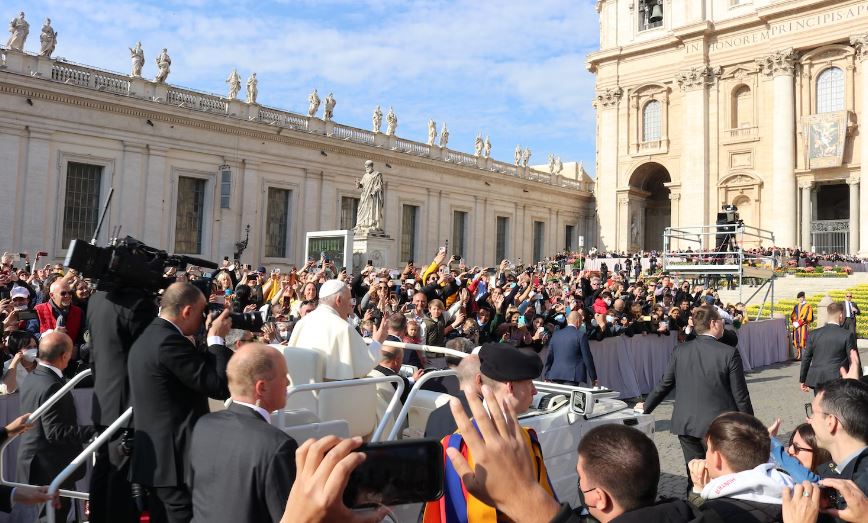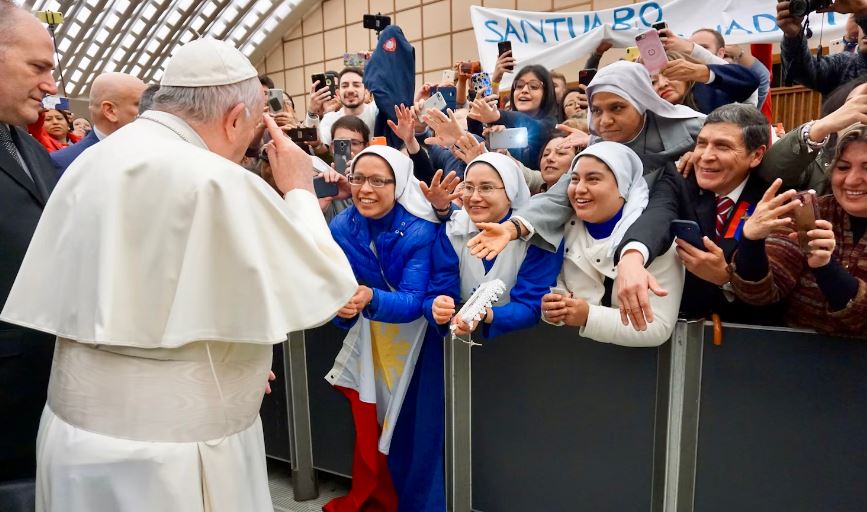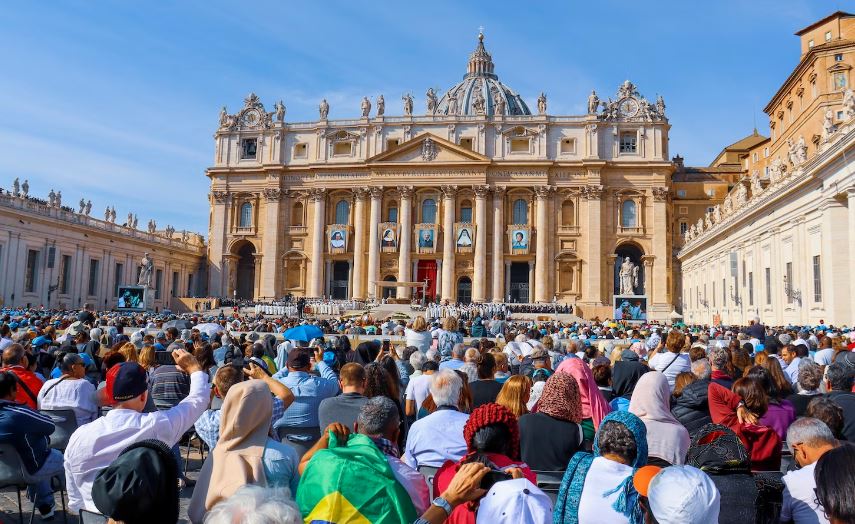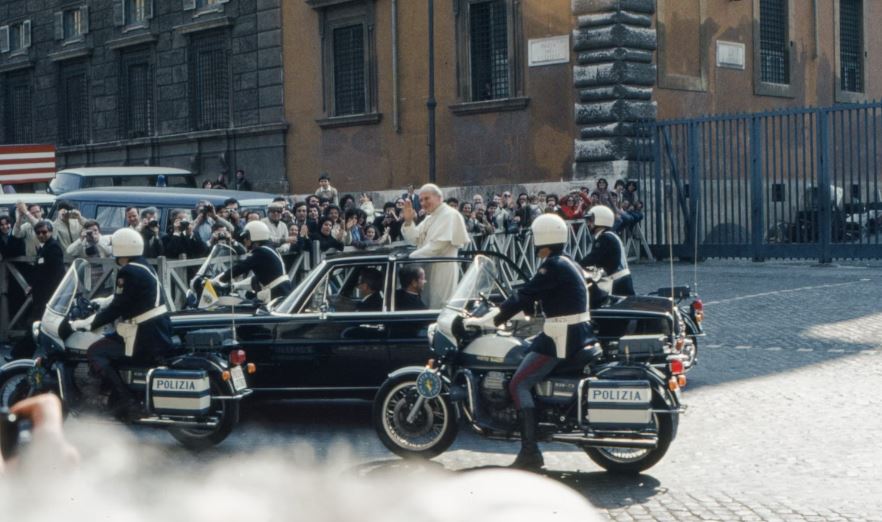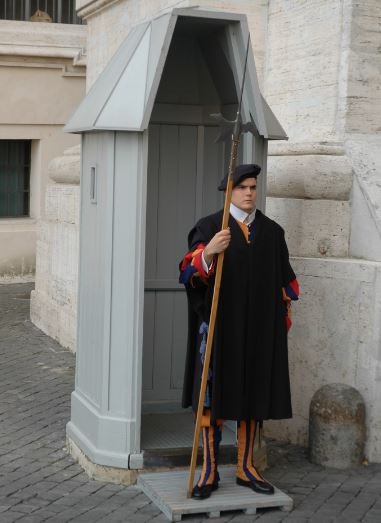The pope, also known as the paramount pontiff, Roman pontiff, and sovereign pontiff, has served as the head of state or sovereign of the Papal States and later the Vatican City State. From a Catholic perspective, the primacy of the bishop of Rome derives primarily from his position as the apostolic successor of Saint Peter, to whom Jesus granted primacy.
This article provides information about the pontiff and his protectors.
Origin of the Pope
Rome was not constructed in a single day, and neither was the Roman Catholic papacy. It was a lengthy process that resulted in the establishment of this ancient office that combines spiritual and political claims.
The pope asserts that he holds an office that Jesus originally bestowed upon the apostle Peter and that has been passed down in an unbroken line to succeeding apostles. In other words, the pontiff asserts apostolic authority and the continuation of the mission Jesus allegedly entrusted to Peter in Matthew 16:18.
This passage represents an embryonic era of the papacy, according to the Roman Catholic Church. According to the belief, Jesus bestowed onto Peter, and thereafter all of Peter’s official successors, a fundamental position in the establishment of his church. Traditions and practices developed the role of the bishop of Rome to the point where the papacy ultimately emerged.
The Pope and the Papacy’s function
The Pope presides over the Roman Catholic Church and is the Bishop of Rome. Catholics believe that the Pope is the direct successor of St. Peter, the leader of the apostles. Because of this, they recognize his authority. The position of the pontiff is known as the papacy.
For Catholics, the papacy is an additional source of authority. While many Catholics look to the Bible for guidance, they also have access to the pope’s teachings important because he represents a direct lineage to Jesus. In this way, Catholics believe that Jesus is present in the papacy.
Throughout history, the papacy has been very politically active. One objective of the contemporary papacy is to combat injustice and destitution. The Roman Catholic Church can be identified as the most ancient Christian denomination. This indicates that the papacy plays a significant influence in the global perception of Christianity.
The Catholic Church
The Vatican City (Città del Vaticano) was established in 1929 following the Lateran Treaty between the Italian State and the Roman Catholic Church. A 110-acre parcel was annexed to the treaty, along with other properties formally located within the Italian state that were granted extraterritoriality.
The Vatican City State has never had its own military. It has, however, always had a de facto military provided by the Holy See’s armed forces, including the Pontifical Swiss Guard, Palatine Guard, Noble Guard, and Papal Gendarmerie Corps. The armed forces mentioned have provided their services within Vatican City, the Papal Palace of Castel Gandolfo, and several other extraterritorial properties belonging to the Holy See. In addition, the government has not been involved in a conflict since the Lateran Treaty established it in 1929.
Since the Vatican is located on Italian territory, the Italian Armed Forces are liable for defending the country against any international aggressor. During World War II, the Palatine Guard was also deployed to protect all Papal properties in and around Rome.
The Pontifical Swiss Guard is an army maintained by the Holy See and responsible for the protection of the Apostolic Palace and the Pope’s security service. Together with the Corps of Gendarmerie of Vatican City, a civilian force, it regulates access to the entrances of the city-state.
The Swiss Guards
Swiss Guards, Italian Guardia Svizzera, Swiss military unit entrusted for the protection of the pope. Often referred to as “the world’s smallest army,” they serve as the pontiff’s personal escorts and as watchmen for Vatican City and the pontifical villa Castel Gandolfo.
The guards are employed by the Roman Catholic Church under the direction of the pope, to whom they vow fealty in a ceremony at Belvedere Court. As is typical of elite military units, there is intense competition to join the Swiss Guards. New recruits must be celibate Roman Catholic men with Swiss citizenship, between the ages of 19 and 30, at least 5 feet 8 inches (1.74 meters) tall, possess a professional diploma or high school diploma, and complete Swiss military basic training. Historically, new recruits were also required to demonstrate they lacked physical deformities, and commanding officers were typically of noble descent.
The guards typically don blue doublets and blue berets, but on ceremonial occasions they don their renowned Renaissance-era uniforms. They are among the oldest uniforms still in use, but contrary to legend, Michelangelo presumably did not design them. The tunics are patterned in the family colors of red, dark blue, and yellow. In addition to white ruffs and plumed helmets (with various-colored ostrich feathers denoting different ranks), armor is sometimes worn. The guards wear traditional garb and wield pikes and swords, but they are also trained in modern weaponry and counterterrorism techniques.
The Swiss Guards’ living quarters are located on the eastern border of the city, north of St. Peter’s Square, and adjacent to the Vatican palace. Their chapel is dedicated to Saints Martin and Sebastian, and their cemetery is located near St. Peter’s Basilica in Campo Santo Teutonico.
Swiss mercenaries were historically regarded as the finest soldiers in the world. The Helvetians are a group of individuals known for their martial prowess, which has earned them a reputation for bravery. Throughout history, they have been sought after by several European nations, particularly France and Spain, due to their exceptional military skills. During the period spanning the late 14th and 15th centuries, the guardsmen commenced their service to the Papal States. In the year 1505, Matthaus Schiner, a Swiss bishop who would eventually become a cardinal, put up a proposition on behalf of Pope Julius II. This proposition suggested the creation of a lasting Swiss contingent that would function under the direct authority of the pope.
The initial group of 150 Swiss guardsmen, under the leadership of Captain Kaspar von Silenen, reached the Vatican on January 22, 1506. In the event known as the sack of Rome in 1527, the majority of the guardsmen, totaling 147 individuals, perished while valiantly protecting Pope Clement VII. Consequently, these guardsmen swiftly gained recognition for their acts of selflessness and bravery. During World War II, the Swiss Guards demonstrated their readiness for a similar act of selflessness, when they strategically positioned themselves in defense against the advancing German forces in Rome, despite being significantly outnumbered. Nevertheless, Adolf Hitler made the strategic decision to refrain from launching an assault on the Vatican.
In 1914, the unit was reorganized to include a commandant (with the rank of colonel), five other ranking officers, fifteen inferior officers, a chaplain, and one hundred and ten pikemen. In 1979, their number was determined at 100 (a commandant, three additional high officers, a chaplain, twenty-three lesser officers, two drummers, and seventy pikemen).
During an assassination attempt in St. Peter’s Square in 1981, the Swiss Guards assisted in protecting Pope John Paul II. The individual who promptly came to the aid of the pope, while being attired in civilian attire, was afterwards appointed as the commandant of the Swiss Guards in the year 1998. Shortly after his promotion, the individual and his spouse were tragically killed by a dissatisfied guard of lesser rank, who afterwards took his own life. These incidents marked the initial instances of killings recorded in Vatican City since the mid-1800s.
The Swiss Guards are occasionally designated as the law enforcement agency of Vatican City; yet, a distinct police force assumes the responsibility for ensuring the comprehensive security of the sovereign state (except St. Peter’s Square, which is within the jurisdiction of the Italian police).
In 1914, the unit was reorganized to include a commandant (with the rank of colonel), five other ranking officers, fifteen inferior officers, a chaplain, and one hundred and ten pikemen. In 1979, their number was set at 100 (a commandant, three other high officers, a chaplain, twenty-three inferior officers, two drummers, and seventy pikemen). In 1959 and 1976, further reorganizations occurred.
In conclusion
The Pope and the President both have bodyguards for the same reason. Numerous individuals would endeavour to murder the Pope. ISIS has issued multiple warnings against Pope Francis. Aside from terrorist organizations, there are individuals who would wish to murder the Pope, not because of what he believes or represents, but because of his global fame.
